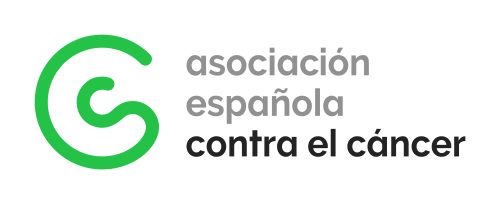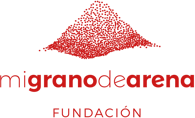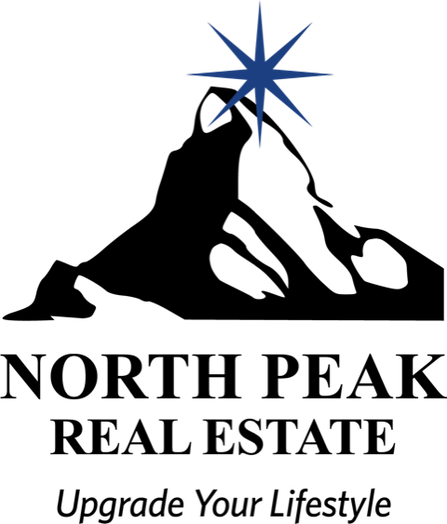Collected
15€
To benefit
Cruce a nado del estrecho de Gibraltar
Cruzamos el estrecho por la investigación oncológica. Un reto enorme, como nuestra motivación. ¡Ayúdanos! We are swimming the Strait of Gibraltar to raise funds for our school´s cancer research scheme. Big challenge, big resolve. Help us! 1€=2 meters
Collected
15€
Goal
8.000€
Donations
2
Left
Finished
In support of
Cause lead by
Category
VERSION EN ESPAÑOL/ FOLLOWED BY THE ENGLISH VERSION
Al principio, fuimos juntos. Los Postigo y los Sebastián de Erice éramos familias vecinas y nuestros padres se turnaban para llevarnos juntos al colegio en coche de camino a sus trabajos. Desde entonces ha pasado media vida y vamos juntos de nuevo, esta vez para cumplir un reto deportivo con acento solidario: cruzar a nado el estrecho de Gibraltar, recaudando fondos para la beca BIOOR del colegio Británico. De conseguirlo, será la primera vez en la historia del estrecho que tres hermanos españoles lo cruzan a nado juntos, y la segunda vez absoluta tras los hermanos Ghadge en el año 2000.
El cruce a nado del estrecho está considerado uno de los más difíciles del mundo, no en vano forma parte de la serie de travesias en aguas abiertas denominada ¨Siete Océanos¨. La distancia, las corrientes, el tráfico mercante y las condiciones cambiantes del estrecho atraen a nadadores de todo el mundo, desde que en 1928 la británica Mercedes Gleitze lograra el primer cruce al tercer intento y tras más de 9 horas nadando. Con una profundidad máxima de 1km, la distancia en línea recta es de 14.5km, que a nado se convertirán en 16km o más por las corrientes laterales, normalmente en dirección oeste-este (Atlántico > Mediterráneo).
Nosotros somos simples aficionados a la natación, rondando los 50 años (alguno los supera), no pertenecemos a ningún club, ni nos hemos enfrentado nunca antes a una distancia similar. Con el asesoramiento de Aaron Sánchez (Kairoscore, Donostia) y de Daniel García Bravo, llevamos meses entrenando, buscando tiempo en nuestras vidas cotidianas, yendo a la piscina a las 6am, un rato al mediodía o al salir de trabajar. Vamos a terminar con más de 400km cada uno, el equivalente a una semana en el agua, ¡y con la paciencia de nuestras familias!
Llegado el día estaremos todo lo preparados que podamos estar, sólo necesitaremos tener algo de suerte. Saldremos temprano de Punta Tarifa, un día de la primera semana de agosto, cuando desde la Asociación de Cruce a Nado del Estrecho de Gibraltar (ACNEG, entidad autorizada para organizar cruces) nos den la señal para salir porque se cumplan las condiciones metereológicas idóneas. Nos acompañarán dos embarcaciones de ACNEG, pero nuestros padres esta vez se quedarán en tierra.
Desde que demos la primera brazada nadaremos con la convicción de llegar los cuatro juntos a la costa de Marruecos. El concepto de ir juntos es el hilo conductor de esta historia, y también uno de los principales condicionantes del cruce. No podemos separarnos más de 50m porque las embarcaciones de apoyo no podrian garantizar nuestra seguridad si estamos desperdigados por el estrecho. Tenemos que nadar agrupados. No será tan fácil, hay olas, corrientes, y tenemos distintos ritmos, o dicho de otro modo, en el grupo hay unos que nadan más rápido que otros.
Seguiremos una formación que habréis visto en otros deportes (ciclismo) o en la naturaleza (aves migratorias): Marco y Luis, los dos más rápidos, nadarán delante, abriendo el camino a Iván y a Jorge, que nadarán inmediatamente detrás aprovechando el rebufo. Así, brazada a brazada, con paradas de avituallamiento cada hora de unos 30 segundos, en las que no está permitido tocar el barco de apoyo, calculamos que emplearemos a partir de cinco horas en llegar a la otra orilla.
Y todo por un objetivo cuyo origen está en nuestro colegio: las becas BIOOR de investigación contra el cáncer. Se trata de un proyecto que nace de la mano de los compañeros de una estudiante del Británico que convivió con esta enfermedad durante tres años. En ese tiempo colaboró con diferentes hospitales con niños enfermos de cáncer y su pasión era la investigación oncológica. Al final, el cáncer le arrebató la vida y sus compañeros de colegio pusieron en marcha esta iniciativa en su honor.
Desde 2003, las Becas de investigación Oncológica Olivia Roddom (BIOOR) han patrocinado cuatro proyectos de investigación de la mano de la Fundación Científica de la Asociación Española contra el Cáncer (AECC). En total, más de 240.000 euros han sido recaudados a través de rastrillos, conciertos, fiestas, donaciones o ventas de objetos hechos por los propios miembros de la Asociación de Voluntarios para la Ciudadanía y Solidaridad del British Council School, que se han destinado a diferentes programas.
Vamos a sumar nuestro esfuerzo a la labor que iniciaron otros compañeros, y por ello pedimos tu colaboración, en la medida en que puedas. Ayúdanos en cada metro a cubrir nadando el estrecho de Gibraltar y contribuye a la investigación contra el cáncer. 1€ = 2 metros. ¡Muchas gracias!
--------------------------------
At the beginning, we went together. The Postigo´s and the Sebastián de Erice were neighboring families in Madrid and our parents took turns driving us to school by car on their way to work. Half our lifes have passed and we are together again, this time to swim together across the Strait of Gibraltar, raising funds for the cancer research proyect of our school, the British Council School. If successful, it will be the first time in the history of the strait that three Spanish brothers cross it together, and the second absolute time after the Ghadge brothers in 2000.
The distance (+16km), the currents, the merchant boats and the changing weather conditions make the Strait of Gibraltar Crossing a difficult swim. It is part of the "Oceans Seven" challenge, which comprises of the 7 hardest channel swims of the world. In 1928 Mercedes Gleitze, an english woman, achieved the first crossing on her third attempt after more than 9 hours swimming. Since then, swimmers from all over the world attempt the crossing every year. With a maximum depth of 1km, the distance in a straight line is 14.5km, which become 16km or more when swimming with the effect of the currents, usually in a west-east direction (Atlantic> Mediterranean).
We are not serious swimmers, we do not belong to any club, nor have we attemped to swim a similar distance before. We have been training for months, making time in our daily lives to hit the pool: at 6am, during lunchbreaks or after work. We will end up doing more than 400km each in training, the equivalent of a week in the water.
Come the day we will be as prepared as we can be, and we will just need to have some luck. We will leave Punta Tarifa early morning, one day in the first week of August, when the Association of the Strait of Gibraltar Crossing (ACNEG, the only entity authorized to organize crossings) give us the go ahead signal. We will be accompanied by two ACNEG boats, but our parents will stay on land this time!
From the first stroke we will swim with the conviction of reaching together the coast of Morocco. The notion of going together is the guiding thread of this story, and also one of the main characteristics of this crossing. We can not separate ourselves more than 50m because the support vessels could not guarantee our safety if we are scattered across the Strait. We have to swim in a pod. It will take some skill, there are waves, currents, and some in the group swim faster than others. But if we want to make the crossing successfully we will have to swim as a team, help each other out.
We will swim in a formation used in other sports (cycling) and in nature (migratory birds): the two fastest, Marco and Luis, will swim in front, opening the way to Ivan and Jorge, who will be drafting immediately behind. Stopping for feeds every hour (1 minute max), in which it is not allowed to touch the support boat, we estimate we can make the crossing in about five or six hours.
We do this to raise funds for our school´s scholarship grant for cancer research, BIOOR. It was the initiative of the classmates of a British student who lived with cancer for three years. At that time she collaborated with different hospitals with children suffering from cancer and her passion was oncological research. In the end, cancer took her life and her classmates launched this initiative in his honor.
Since 2003, Olivia Roddom Oncology Research Grants (BIOOR) have sponsored four research projects led by the Scientific Foundation of the Spanish Association Against Cancer (AECC). In total, more than 240,000 euros have been raised through street markets, concerts, parties, donations or sales of objects made by the members of the Association of Volunteers for Citizenship and Solidarity of the British Council School, which have been allocated to different programs.
Help us swim the distance (16km), help cancer research. €1 = 2meters. Thank you very much!

La aecc integra en su seno a pacientes, familiares, personas voluntarias y profesionales que trabajan unidos para prevenir, sensibilizar, acompañar a las personas, y financiar proyectos de investigación oncológica que permitirán un mejor diagnóstico y tratamiento del cáncer.
Donators (2)
Daniel
10€
2,700 days ago
Anonymous
Hidden donation
2,701 days ago









Comments (2)
Daniel
Mucho ánimo campeones, el reto es fabuloso!!